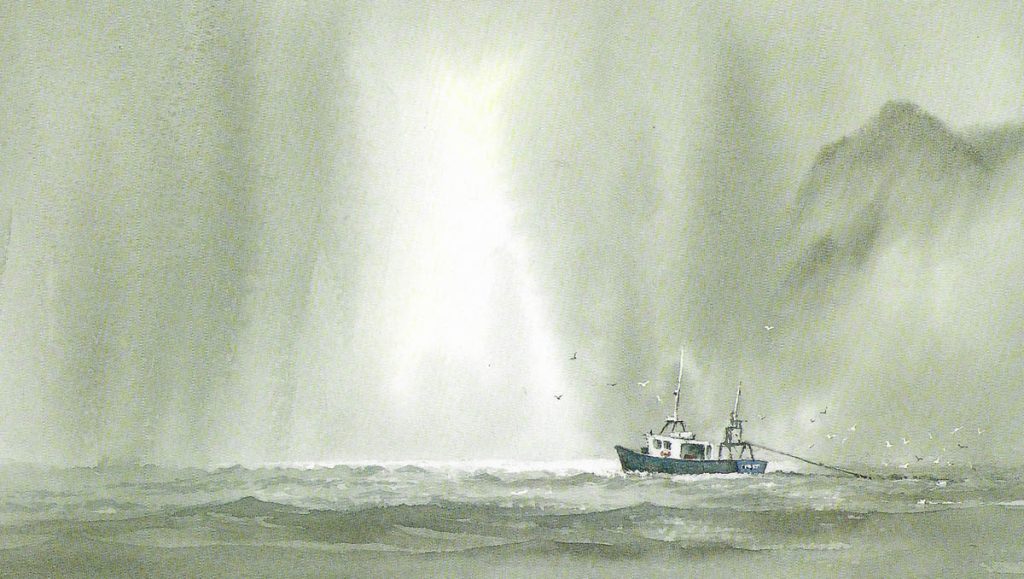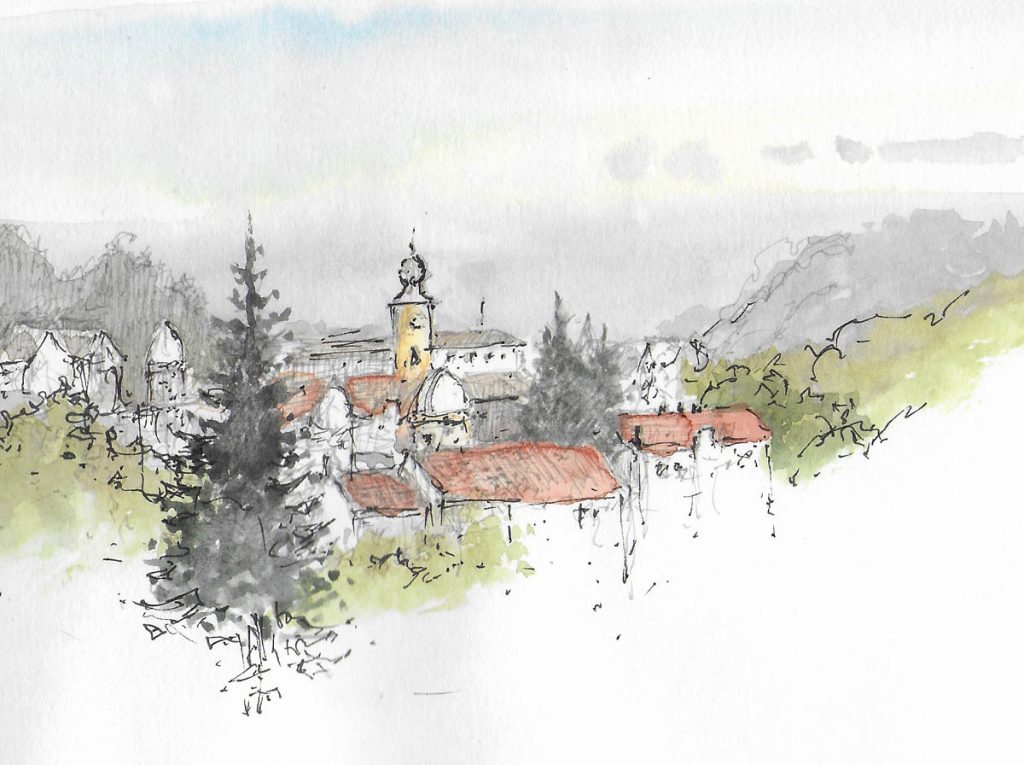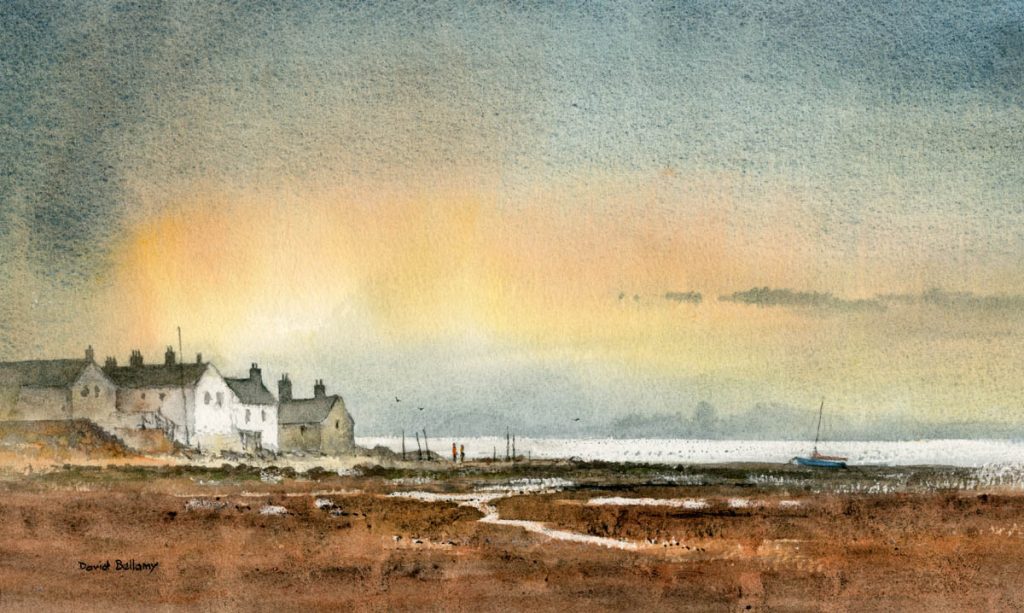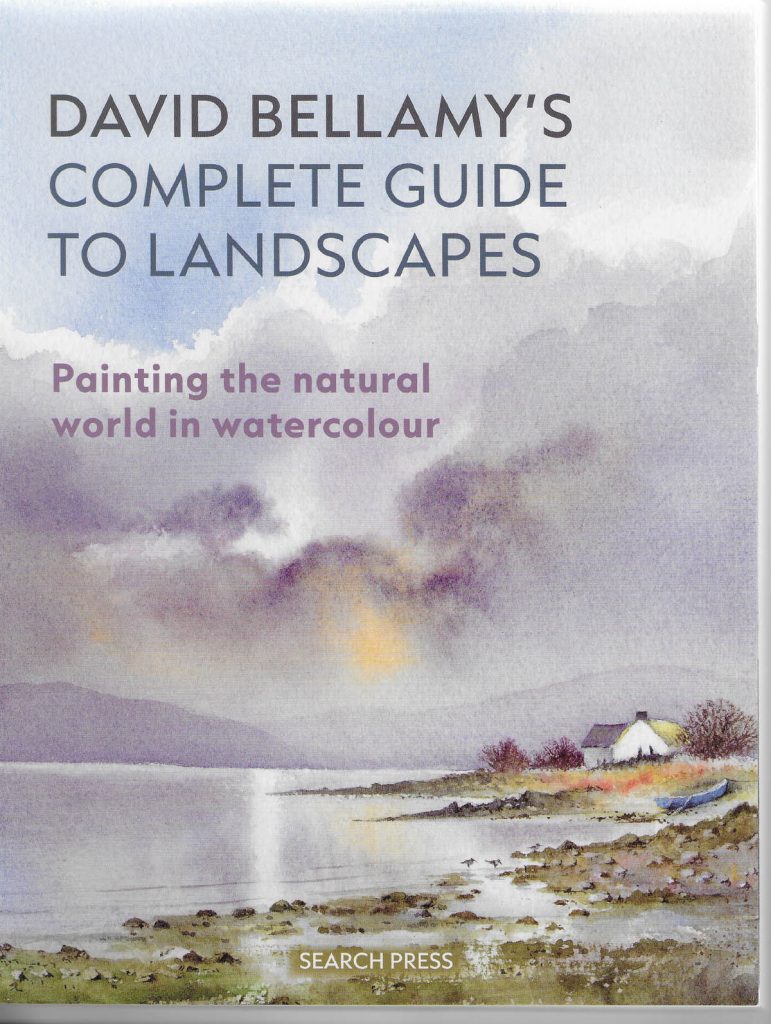Have you experienced the frustration of seeing a stunning focal point set against a ghastly background, and wondered what on earth to do with the composition? You can, of course alter the background by bringing in new features that are not present, or turning it into a complete abstract, but my favourite is to use atmosphere to lose unwanted features, and occasionally this has to be quite drastic.

In this view of a trawler at sea off the Scottish coast I should point out that the background in this instance was certainly not ghastly: I just wanted to create the atmosphere and lose nearly all background detail. Suggesting a misty peak on the right with the wet-in-wet method implied the proximity of mountain scenery without elaboration, otherwise there is hardly any detail other than the shaft of light which illuminates the water ahead of the craft. You can apply this method for land-based subjects in much the same way, bringing in one or two suggestions of topographical features in a simple manner as I have done with the misty peak, or alternatively just losing part of the background in this way. It doesn’t have to be a foggy day, either, as low, intense backlighting can have a similar effect. This is also a useful ploy when you enjoy painting the same main feature but wish to alter the background to avoid too much repetition. Give it a go – it’s a great exercise.
I shall be demonstrating painting a waterfall at Erwood Station Gallery & Craft Centre at 2pm on Tuesday 10th December, and all are welcome. There will be a small charge, the proceeds going to Brecon Mountain Rescue Team and booking is essential. Please ring 01982 560555 to book a place and get any further information. The venue is in a delightful rural location beside the River Wye about 6 miles south of Builth Wells, just off the A470 north of Erwood village where they have the most wonderful cakes and teas.
The watercolour demonstration will show how to paint cascading water, summer trees, rocks, reflections in dark pools, and much more, using a variety of techniques that include some innovative approaches to applying paint. Bring along a notebook and camera, and any questions you might have, and if you bring along your sketchbook and make a day of it so much the better! It will last about two hours and I look forward to seeing you.




